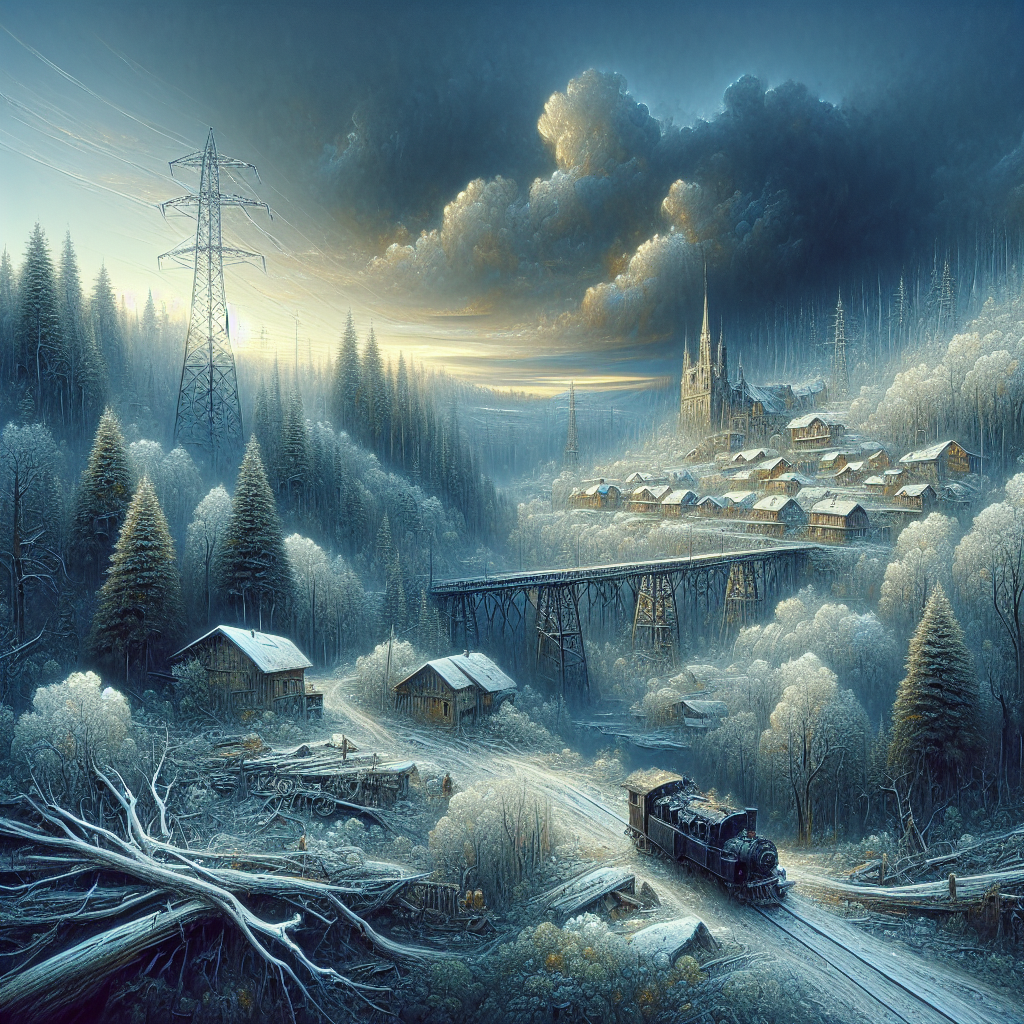Emile Zola: A Literary Giant
Introduction to Emile Zola
Emile Zola stands as one of the most influential authors in literary history. I have always been captivated by his ability to intertwine rich storytelling with social commentary. Born on April 2, 1840, in Paris, France, Zola became a leading figure in the Naturalism movement, which aimed to depict life with unflinching realism. His works often focus on the struggles of the working class and the impact of environment on human fate, showcasing his deep empathy and understanding of society.
Throughout his career, Zola produced more than thirty novels, each contributing to an overarching narrative about human existence and social dynamics. Some of his most notable works include “Germinal,” “Nana,” and “Thérèse Raquin.” These pieces not only highlight his literary prowess but also reflect his observations of contemporary society. For further insights into his impressive catalog, I recommend exploring his emile zola works.
Influence and Impact of Emile Zola Novels
Zola’s novels have had a lasting impact on both literature and society. I find it fascinating to see how his writings provide a lens through which we can explore the themes of social injustice, class struggles, and the harsh realities of life. His commitment to portraying the lives of everyday people has elevated the importance of social issues in literature.
I often reflect on how Zola’s works laid the foundation for modern realism in literature, influencing countless authors who followed him. They provide a detailed examination of human behavior and challenge readers to confront difficult truths. His storytelling approach has transformed how I perceive narrative structures and character development.
To illustrate the impact of Zola’s key works, here’s a snapshot of some of his most significant novels:
| Novel Title | Year Published | Key Themes |
|---|---|---|
| Germinal | 1885 | Labor rights, class struggle |
| Nana | 1880 | Femininity, societal roles |
| Thérèse Raquin | 1867 | Passion, morality, consequence |
By examining Zola’s contributions to literature, I am reminded of his unique ability to blend storytelling with critical social commentary, allowing readers to engage with profound themes. His legacy continues to resonate in modern literature and remains relevant, prompting critical discussions about society’s structure and challenges. For an in-depth look at Zola’s life, I encourage you to read more in his emile zola biography.
The Naturalism Movement
The naturalism movement emerged in the late 19th century as an extension of realism in literature. It emphasized a scientific approach to understanding human behavior and society, focusing on the influence of environment, heredity, and social conditions.
Characteristics of Naturalism
Naturalism is characterized by several distinct features that set it apart from other literary movements. I find it fascinating to observe how these characteristics manifest in the works of prominent naturalist authors. Here are some key traits:
| Characteristic | Description |
|---|---|
| Determinism | The belief that individual choices are influenced by external factors such as environment, biology, and social context. |
| Detailed Descriptions | A focus on meticulous detail to portray realistic settings and characters. |
| Scientific Approach | A reliance on observations and evidence to depict human behavior and societal issues. |
| Emphasis on Social Issues | Exploration of themes like poverty, inequality, and psychological struggles. |
For a deeper dive into naturalism in literature, I recommend checking out our article on naturalism literature.
Emile Zola’s Contribution to Naturalism
Emile Zola is often regarded as the father of naturalism. His works embody the principles of this movement, showcasing a commitment to depicting life as it truly is. I appreciate how Zola’s novels clearly illustrate the struggles of the human condition while critiquing societal flaws.
Zola’s approach involved extensive research and a strong emphasis on the impact of environment and heredity on human behavior. His writing style is characterized by vivid imagery and an objective, detached narrative voice. Some of his major contributions include:
| Work | Contribution |
|---|---|
| “Germinal” | A vivid portrayal of the lives of miners during a strike, emphasizing class struggles and social injustice. For more, visit Germinal by Emile Zola. |
| “Nana” | Explores themes of sexuality and the struggles faced by women in society, showcasing how societal conditions shape individual destinies. |
| “Thérèse Raquin” | A psychological exploration of guilt and morality, emphasizing the darker aspects of human nature within the context of determinism. |
Zola’s influence extends beyond his own works; he set the stage for future authors in the naturalist tradition. To learn more about his extensive body of work, you can refer to the article on Emile Zola works and explore further into his life by checking out Emile Zola biography.
Key Works by Emile Zola
Emile Zola’s contributions to literature are beautifully illustrated through his key works. Three of his most significant novels are “Germinal,” “Nana,” and “Thérèse Raquin.” Each of these works showcases his mastery of storytelling and his keen insight into human nature and society.
“Germinal”
“Germinal” is often regarded as one of Zola’s paramount novels. Published in 1885, it follows the lives of coal miners in northern France during a time of industrial strife. Through the lens of the protagonist, Étienne Lantier, the novel explores themes of class struggle, exploitation, and the quest for social justice.
| Element | Details |
|---|---|
| Published | 1885 |
| Genre | Naturalist novel |
| Main Themes | Class struggle, social injustice, solidarity |
For a deeper dive into this powerful narrative, visit the article on Germinal by Emile Zola.
“Nana”
Another significant work is “Nana,” released in 1880. This novel follows the life of Nana Coupeau, an ambitious and seductive woman who rises from the slums to become a famous actress and courtesan. Through Nana’s life, Zola critiques the decadence of Parisian society while illustrating the realities of female exploitation.
| Element | Details |
|---|---|
| Published | 1880 |
| Genre | Naturalist novel |
| Main Themes | Femininity, social morality, decadence |
To explore more about this fascinating character and her impact, check our article on Emile Zola works.
“Thérèse Raquin”
“Thérèse Raquin,” published in 1867, is another cornerstone of Zola’s literary legacy. This novel tells the story of Thérèse, a woman trapped in a loveless marriage who embarks on a passionate affair that leads to murder. Zola weaves together themes of desire, guilt, and the consequences of one’s actions throughout this gripping tale.
| Element | Details |
|---|---|
| Published | 1867 |
| Genre | Naturalist novel |
| Main Themes | Passion, morality, fate |
For insights into Zola’s life and the context behind his writing, see the article on Emile Zola biography.
Each of these works provides a unique perspective on the human experience, reflecting Zola’s unwavering commitment to social commentary and realism in literature. They continue to resonate with readers, inviting reflection on society and personal morality.
Themes in Emile Zola Novels
Emile Zola’s novels delve into various themes that resonate deeply with readers. His exploration of social issues, human behavior, and the effects of industrialization are prominent throughout his works.
Social Injustice and Class Struggles
One of the most significant themes in Zola’s novels is social injustice, particularly highlighting class struggles. I find that his stories often showcase the stark contrast between different social strata, emphasizing the plight of the working class in an increasingly capitalist society. This theme is vividly depicted in works like Germinal, where the lives of coal miners are intricately examined.
The table below outlines key aspects of social injustice and class struggles in Zola’s literature:
| Aspect | Description | Key Work |
|---|---|---|
| Inequality | Disparities between the wealthy and poor | Nana |
| Exploitation | Workers’ exploitation by the bourgeoisie | Germinal |
| Struggle for Rights | The fight for better wages and conditions | L’Assommoir |
| Impact of Poverty | Effects of poverty on family and society | Thérèse Raquin |
Human Nature and Behavior
Zola’s exploration of human nature offers a profound insight into the motivations and moral dilemmas faced by his characters. I often find his characters’ flaws and virtues alike to be depicted with raw honesty. Zola observes people in their natural environments, revealing the complexities of human behavior shaped by circumstances.
Notable elements related to human behavior in Zola’s novels include:
| Element | Description | Key Work |
|---|---|---|
| Ambition | The drive for success and its consequences | Nana |
| Desire and Instinct | The inner urges that govern decisions | Thérèse Raquin |
| Morality | Questions of ethics and personal responsibility | Germinal |
Industrialization and Urbanization
Industrialization and urbanization are pivotal themes in Zola’s oeuvre. I appreciate how he documents the transformation of society through these processes and their impact on individuals and communities. The characters in his stories are often products of their environment, showcasing the effects of rapid industrial change.
The following table summarizes the representation of industrialization and urbanization in Zola’s works:
| Aspect | Description | Key Work |
|---|---|---|
| Growth of Cities | The expansion and challenges of urban life | Germinal |
| Working Conditions | The harsh realities of factory life | L’Assommoir |
| Impact on Society | Shifts in social structure due to urbanization | The Masterpiece |
Emile Zola’s ability to weave these themes into the fabric of his narratives makes his novels timeless and relevant. For those looking to delve deeper into Zola’s contributions to literature, I recommend exploring more of his emile zola works or learning about his life in my article on emile zola biography.
Legacy and Influence
Emile Zola’s Enduring Legacy
Emile Zola’s impact on literature is vast and significant. His novels remain a cornerstone of the literary world, solidifying his status as a literary giant. Zola’s unique approach to storytelling and his commitment to depicting the realities of life have left a lasting impression on readers and writers alike. Many consider his works essential reading when exploring the realm of naturalism literature.
Zola’s ability to weave intricate narratives that reflect the struggles of the human experience has influenced countless authors. His dedication to social issues and the intricacies of human behavior resonates through his enduring legacy.
Influence on Literature and Society
The influence of Zola’s novels extends beyond literature and into society as a whole. His works often tackled pressing social issues, including poverty, labor conditions, and class struggles. This focus on systemic challenges has prompted discussions and inspired movements aimed at addressing these societal problems.
Below is a table that highlights some of the key themes present in Zola’s novels and their societal implications:
| Theme | Description | Societal Impact |
|---|---|---|
| Social Injustice | Exploration of class disparities | Raised awareness on social issues |
| Industrialization | Examination of the effects of rapid change | Encouraged labor rights advocacy |
| Human Behavior | Analysis of instinct and morality | Influenced psychological studies |
The relevance of his themes can still be seen today, as they fuel ongoing conversations around inequality and justice.
Contemporary Relevance of Emile Zola’s Works
The novels of Zola continue to find relevance in contemporary discussions. Readers today can connect with Zola’s exploration of human experiences that remain pertinent, such as inequality, social problems, and the human condition. His works, such as Germinal by Emile Zola, not only provide historical context but also serve as a lens through which we can examine our current society.
Many of Zola’s observations about society and human nature are echoed in modern literature, film, and other art forms. As new generations discover his works, the conversation around his themes persists, making Zola’s legacy not just a relic of the past, but a continuous influence that shapes the way we think about the world today. For a deeper understanding of his contributions, I recommend looking into his biography and the broader scope of his works.

